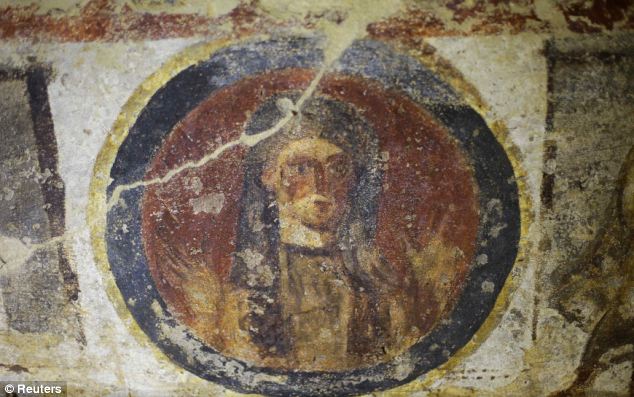Recently restored frescoes in the Catacombs of Priscilla have stirred the debate about whether women were leaders in the early Christian church. Archaeologists have estimated that there are between 60 and 90 miles of catacombs dug beneath the environs of Rome. They were in constant use from the second through the fourth centuries CE, and as many as 4,000,000 Romans – pagan, Jewish, and Christian – were buried in these underground cemeteries.
The Priscilla Catacombs, dug under the Via Salaria, are well known for their numerous early third-century paintings, including the oldest known image of the Virgin and Child. Two chambers contain scenes interpreted by some to show women acting as priests. The first, a banquet scene, may represent women celebrating the Eucharist together. However, it could simply represent a funeral banquet. The other shows a woman wearing a long robe and veil. She stand at the center of the composition with hands outstretched in a gesture that may be the one used by priests during group worship. Others have argued that she is simply praying in the so-called orant pose, typical of Early Christian prayer practice.
One argument for a male-only priesthood is that Jesus’ twelve apostles were all men. However, the bible makes frequent reference to women in Jesus’ circle, and it was a woman – Mary Magdalene – who was the first to witness the resurrected Christ.
Drawn from reports by Reuters; The Guardian; and the Daily Mail.
Further reading: Matthew 27:55-56, Mark 15:40-41, Luke 8:1-3, 23:49, John 20:14-18; Acts 1:12-14, 18:24-26, 21:7-9, Romans 16:1-16; 1 Corinthians 14:33-35; 1 Timothy 2:11-12.





